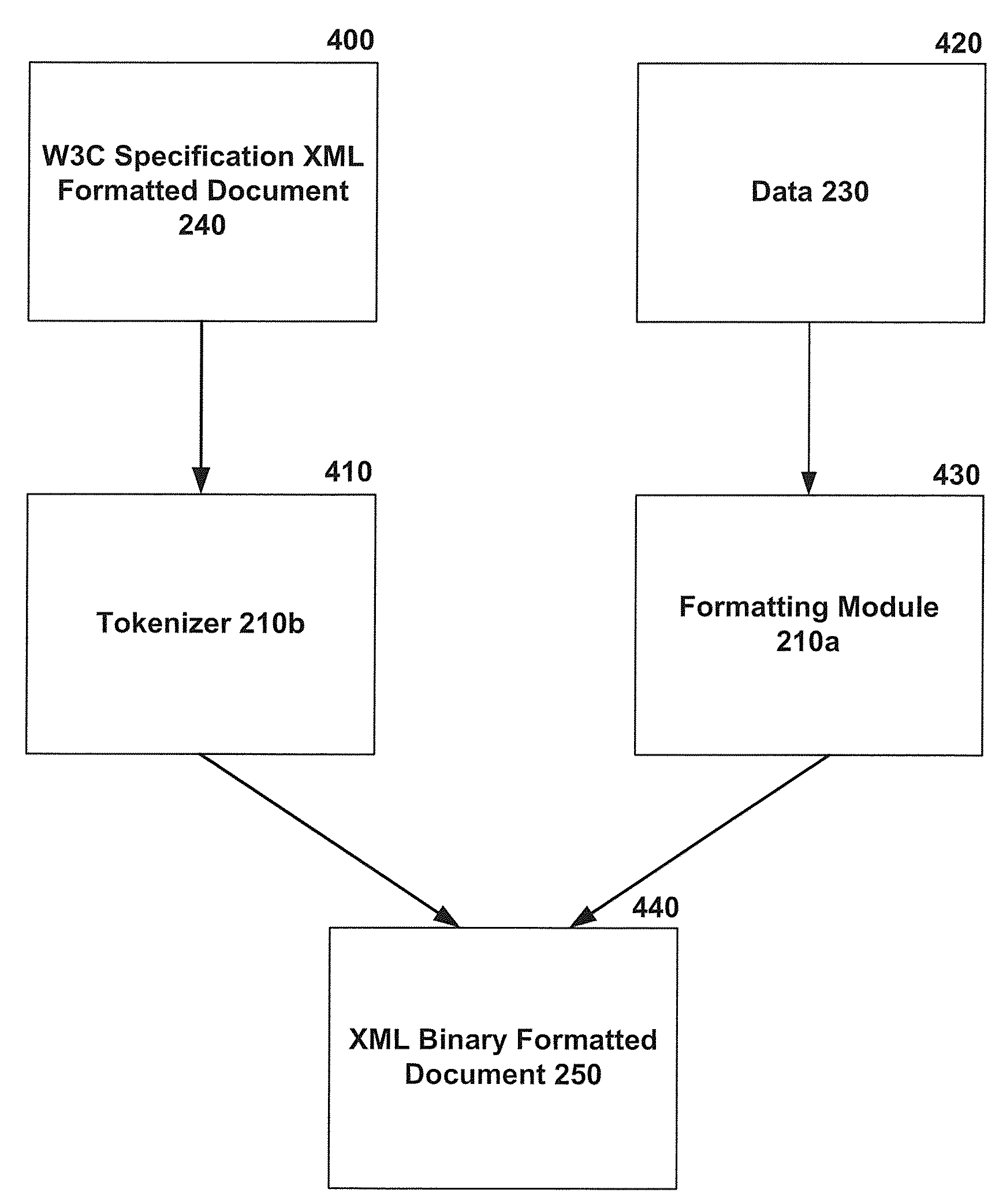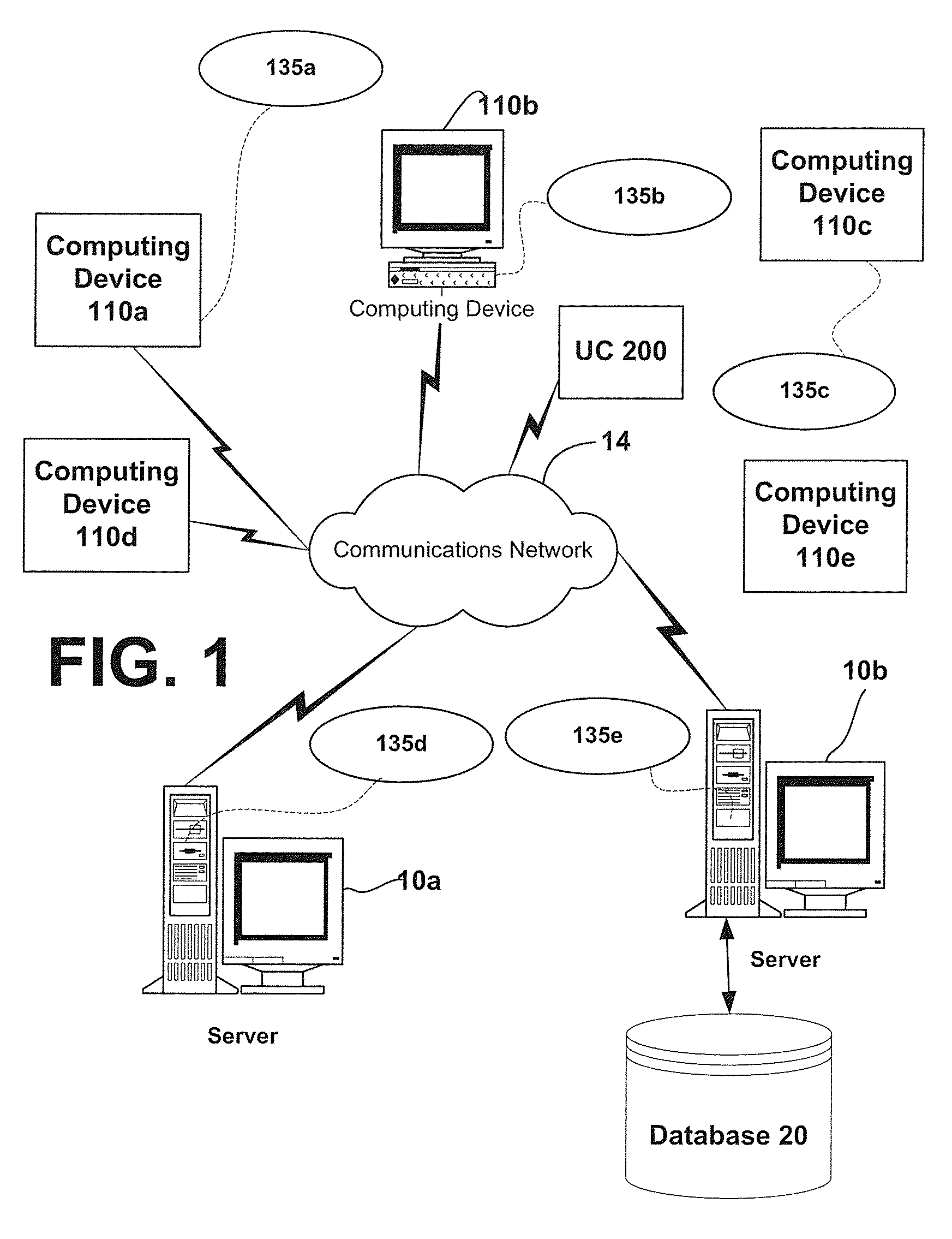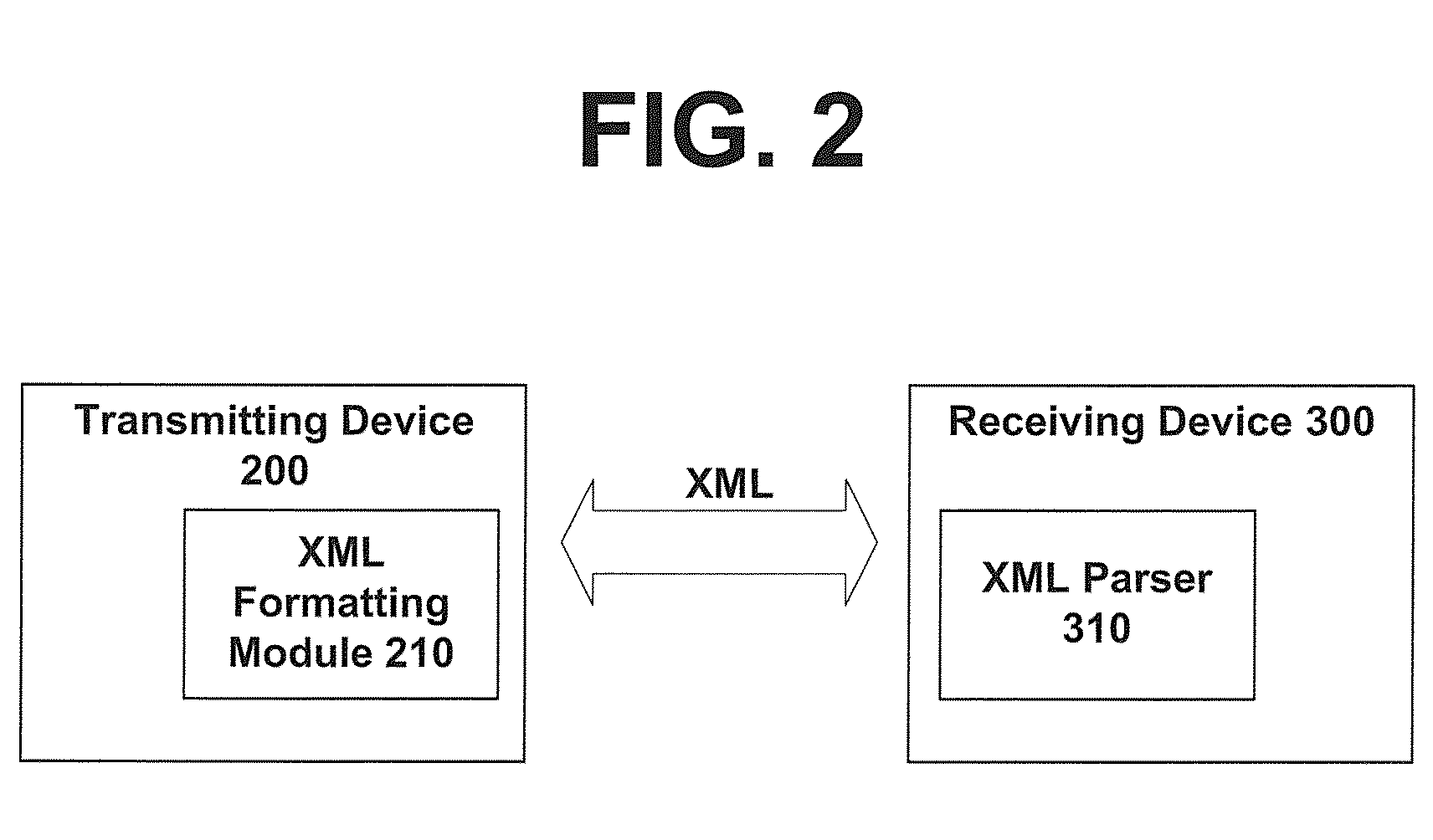Method and System for Providing an XML Binary Format
a binary format and xml technology, applied in the field of tagbased data description binary formatting, can solve the problems of piece-by-piece process, unnecessary overhead generated by xml document by the recipient computing device, and reduce the size of the resulting file. , the effect of reducing the size of the fil
- Summary
- Abstract
- Description
- Claims
- Application Information
AI Technical Summary
Benefits of technology
Problems solved by technology
Method used
Image
Examples
example 1-1
An XML Document
[0043]
Verbatim DataLife MF 2HD 10 3.5” black floppy disks
[0044]This document is text and might well be stored in a text file. The document can be edited with this file with any standard text editor, such as BBEdit, UltraEdit, Emacs, or vi. A special XML editor is unnecessary. Then again, this document might not be a file at all. It might be a record in a database. It might be assembled on the fly by a CGI query to a web server and exist only in a computer's memory. It might even be stored in multiple files and assembled at runtime. Even if it isn't in a file, however, the document is a text document that can be read and transmitted by any software capable of reading and transmitting text.
[0045]Programs that try to understand the contents of the XML document i.e., programs that do not merely treat it as any other text file, use an XML parser to read the document. The parser is responsible for dividing the document into individual elements, attributes, and other piec...
examples
[0078]In Examples A and B below, a text-based representation precedes a binary formatted or tokenized representation in accordance with the present invention. White space is ignored to make the encoding less verbose, and the character count does not include the white space. In example A, the binary representation reduces the overall byte count from 41 to 34. In Example B, the binary representation reduces the overall byte count from 293 to 212.
example a
[0079]
footextSTREAMDESCRIPTION0x08Name definition for ‘a’ gets name token 10x01 ‘a’Textdata0x01Element0x01Name token 1 for ‘a’0x08Name definition for ‘b’ gets name token 20x01 ‘b’Textdata0x01Element0x02Name token 2 for ‘b’0x89Text data token with singular bit set (ENDof ‘b’)0x03 ‘f’‘o’‘o’Textdata0x08Name definition for ‘bar’ gets name token 30x03 ‘b’‘a’‘r’Textdata0x81Element with empty bit set0x03Name token 1 for ‘bar’0x00END of ‘bar’ (no attributes)0x00END of ‘a’0x01Element0x01Name token 1 for ‘a’0x01Element0x02Name token 1 for ‘b’0x89Text data token with singular bit set (END of‘b’)0x04 ‘t’‘e’‘x’‘t’Textdata0x00END of ‘a’
PUM
 Login to View More
Login to View More Abstract
Description
Claims
Application Information
 Login to View More
Login to View More - R&D
- Intellectual Property
- Life Sciences
- Materials
- Tech Scout
- Unparalleled Data Quality
- Higher Quality Content
- 60% Fewer Hallucinations
Browse by: Latest US Patents, China's latest patents, Technical Efficacy Thesaurus, Application Domain, Technology Topic, Popular Technical Reports.
© 2025 PatSnap. All rights reserved.Legal|Privacy policy|Modern Slavery Act Transparency Statement|Sitemap|About US| Contact US: help@patsnap.com



